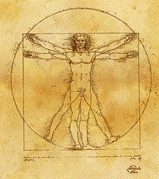Instructional Materials in Physics and Astronomy

Physical Science Modules for Bioscience Students
Document Type
Article
Date of this Version
1975
Abstract
OBJECTIVES
After you have completed this module, you will be able to:
a) describe qualitatively the pressure of blood in the human body as a function of location in the circulation system, i.e., aorta, artery, arterioles, ... , vena cava.
b) Discuss in a paragraph (short or long) how the osmotic pressure in the capillaries regulates the water level of the interstitial fluid under normal pressure.
c) Describe how a weak ventricle in the heart creates an edema in the capillaries. Use the terms of this module, i.e., abnormal pressure, water pressure inside and water pressure outside, in this description.
d) Illustrate reverse osmosis by explaining the process of de-salinating sea water.
e) Define osmosis and describe how osmotic pressure is related to the colligative properties of a solution.
NARRATIVE
This story begins in 1748 when J. Abbe Nollet observed and recorded his observation of a solvent passing through a membrane from a dilute solution into a more concentrated one. By applying pressure to the more concentrated solution, the flow of solvent could be slowed, stopped, or reversed. The pressure necessary to stop the flow of solvent from the less concentrated to the more concentrated solution through the membrane is called the osmotic pressure. When considering biological systems the solutions are almost all aqueous solutions, the solvent being water. Consider a container of water. Let the container be separated into two sections by a membrane which only allows water to pass through. Dissolve some solid material in the water on one side of the membrane. The pressure which must now be applied to the solution side, in excess of any pressure applied to the water side, to stop the flow of water through the membrane is called the osmotic pressure. This pressure is the subject of this module.


Comments
A Physical Science Module for Bioscience Students
Project Address: PSMBS, 213 Ferguson Hall, University of Nebraska,
Lincoln, NE 68588.